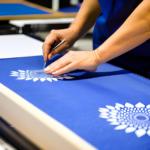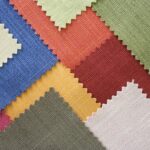Unpacking the Costs and Considerations
The allure of printing your own shirts is undeniable. From the creative freedom it offers to the potential cost savings, many individuals and small businesses are drawn to the idea of DIY shirt printing. But is it truly cheaper to print shirts yourself? Let’s dive into the costs and considerations to find out.
The Cost Breakdown
1. Purchasing Shirts
One of the first considerations is the cost of the shirts themselves. The price per shirt can vary significantly based on factors like quality, brand, style, and quantity. Bulk purchases usually lead to lower costs per unit, making it a critical factor to consider when deciding between bulk and small-batch printing.
2. Equipment and Supplies
Investing in the necessary equipment is a significant upfront cost. This includes purchasing a heat press, screen printing setup, direct-to-garment (DTG) printer, or vinyl cutter, depending on your chosen printing method. Additionally, you’ll need supplies like inks, screens, vinyl, and transfer paper.
3. Shirt Printing Costs
The cost of actually printing a shirt can vary depending on the method you choose. Screen printing involves screen setup fees, ink costs, and labor. DTG printing uses specialized inks and requires regular maintenance. Vinyl printing incurs expenses for vinyl sheets and cutting equipment.
4. Design and Artwork
If you lack design skills, you might need to hire a graphic designer or purchase pre-made designs. These expenses can add up, especially if you require custom and intricate artwork.
5. Workspace and Utility Costs
Creating a dedicated workspace for shirt printing is essential. You’ll need room for equipment, storage, and space to work. This may require additional utility expenses, such as electricity for running printers and heat presses.

Determining the Right Printing Method
Heat Transfer vs. Screen Printing vs. DTG
Each printing method comes with its own set of costs and considerations. Heat transfer methods often have lower startup costs but can result in lower quality prints. Screen printing has higher initial setup costs but is cost-effective for large batches. DTG printing offers high-quality prints but requires a significant investment in the printer itself.
Quantity Matters: Bulk vs. Small-Batch Printing
Pros and Cons
Bulk printing is typically more cost-effective per unit due to economies of scale. However, it also requires substantial storage space and the ability to move inventory quickly. Small-batch printing may have higher per-unit costs but reduces the risk of holding excess unsold inventory.
Other Considerations
Quality Control and Learning Curve
DIY shirt printing may require a learning curve to master the equipment and techniques. Mistakes can result in wasted shirts and materials, increasing costs. Consistent quality control is crucial to producing market-worthy shirts.
Marketing and Sales
Selling your printed shirts requires marketing and sales efforts. Building an online presence, attracting customers, and fulfilling orders all demand time and resources.
Legal Considerations
Trademark and copyright issues can arise when using certain designs or logos. It’s important to navigate these legal aspects to avoid potential legal expenses.

The DIY Advantage
Creativity and Control
One of the significant advantages of DIY shirt printing is the creative freedom it offers. You have complete control over the design, quality, and quantity of your shirts.
Conclusion: Weighing the Costs and Benefits
Ultimately, whether it’s cheaper to print shirts yourself depends on various factors, including your printing method, the scale of your operation, and your ability to produce consistent, quality prints. It’s essential to carefully evaluate all the costs and considerations to determine if the DIY route aligns with your budget and goals.
In this comprehensive discussion, we’ve delved into the expenses involved in DIY shirt printing, helping you make an informed decision based on your specific needs and resources.







